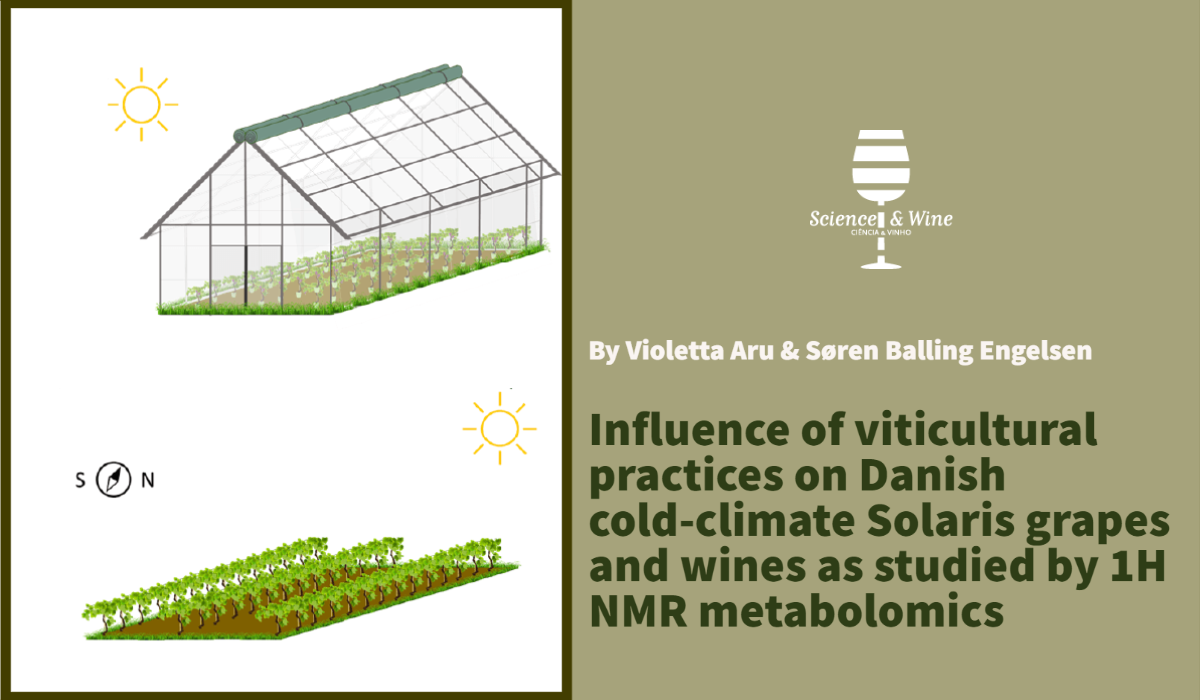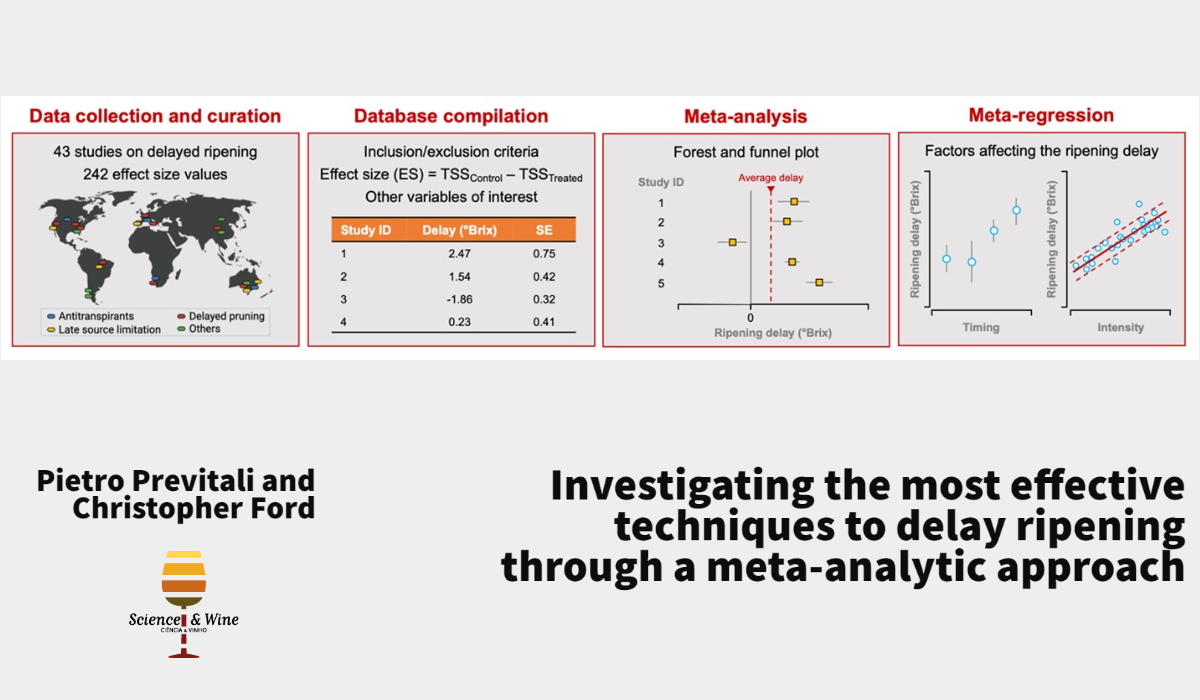The 3rd Science & Wine World Congress on Sustainability in Wine Production and Food Systems was held in Porto/Douro, Portugal from June 14 to 16, 2023. The congress focused on addressing the challenges and opportunities of sustainability in the wine industry and food systems, particularly in the Mediterranean region. Esteemed speakers, including professors, researchers, and industry leaders, gathered to share their insights and research findings.

The enigm of natural wines: a first step to shed light on them
Natural wine (NW) lacks an official or agreed definition, but it can be generally described as wine produced with organic or biodynamic grapes with minimal intervention in the cellar, and with minimal or no use of oenological additives. The present study aimed to test the hypotheses that self-defined NWs differ from conventional wines (CW) in their chemical composition and main sensory characteristics. The levels of conventional oenological parameters, turbidity, biogenic amines, ochratoxin A, ethyl carbamate, sulphites, chlorides, some metals, major, trace and Strecker aldehyde volatile compounds were determined in 28 wines, including natural and conventional Spanish commercial white wines. Wines were also sensory described following a labelled free sorting task.

3rd Science & Wine World Congress
We invite you to join us at the 3rd Science & Wine World Congress and experience the insightful presentations of our esteemed guest speakers. Mark your calendars for June 16th, where Quinta do Ventozelo will provide the perfect backdrop for a memorable day filled with captivating discussions, delectable cuisine, and the inspiring presentation of the Humanwinety project.
Don’t miss this opportunity to be part of the transformative journey towards sustainability and inclusivity in the Mediterranean region. Submit your abstracts and secure your place at the Congress today!

Alcoholic and non-alcoholic rosé wines made with Saccharomyces cerevisiae var. boulardii probiotic yeast
The production of alcoholic and non-alcoholic rosé wines using Saccharomyces cerevisiae var. boulardii probiotic yeast is described in this study for the first time. The outcomes revealed that the rosé wine made with S. cerevisiae var. boulardii had the same values and preliminary sensory characteristics as other commercial wines made with S. cerevisiae EC-1118. The S. cerevisiae var. boulardii yeast successfully survived the high alcohol level produced during fermentation and vacuum distillation. The study also revealed that this unique rosé wine retains its probiotic viability for at least 6 months when stored at room temperature or in the refrigerator, making it a suitable candidate for large-scale production where long storage intervals are required by both producers and consumers.

Perceiving and Adapting to Climate Change: Perspectives of Tuscan Wine-Producing Agritourism Owners
It is now widely accepted that climate change is having a profound impact on the weather systems around the world. These, in turn, have a considerable effect on two important elements of the Tuscan economy: wine production and tourism. This case study sought to explore the relationship between the perception of Tuscan wine-producing agritourism owners of the potentially abstract notion of climate change and their concrete experiences as entrepreneurs. While recognizing the difficulties they face from climate change as viticulturists, as agrotourism owners they welcome the longer seasons which enable them to open in the formerly barren shoulder seasons but struggle with last-minute cancellations due to unpredictable weather in the area.

Influence of viticultural practices on Danish cold-climate Solaris grapes and wines as studied by 1H NMR metabolomics
The present multidisciplinary study aimed at investigating the impact of water deficit, defoliation, and crop thinning on Solaris’ plant and fruit development as well as on the bulk metabolic composition of Solaris must and wines as measured by FT-IR and 1H NMR. Overall, the results show that, from an agronomical point of view, Solaris has a remarkable ability to tolerate and recover from water stress.

Investigating the most effective techniques to delay ripening through a meta-analytic approach
Several vineyard techniques have been proposed to delay grape maturity in light of the advanced maturation driven by increasingly frequent water and heat stress events that are detrimental to grape quality. These studies differ in terms of their experimental conditions, and in the present work we have attempted to summarize previous observations in a quantitative, data-driven systematic review. A meta-analysis of quantitative data gathered across 43 relevant studies revealed the overall significance of the proposed treatments and evaluated the impact of different experimental conditions on the outcome of antitranspirants, delayed pruning and late source limitation.

Effect of mannoproteins from different oenological yeast on pigment composition and color stability of red wine
In this work, MP-rich extracts from Saccharomyces and non-Saccharomyces yeasts were obtained by cell sonication and were characterized. The extracts were added to a red wine and color and pigment composition modifications were evaluated by CIELAB parameters and HPLC-DAD-MS, respectively, after cold treatment (to provoke colloidal instability) and storage at room temperature (to accelerate wine aging). Results indicate that the MP-rich extracts showed differences in their composition and in the structure of the MPs depending on the yeast species. They also had different effects on the stability of wine pigments, being the extract obtained from Torulaspora delbrueckii the one that provided the best results, by contributing to the colloidal and chemical stability of the coloring matter. Wines added with this extract showed concentrations of p-coumaroylated and caffeoylated anthocyanins 33.40% higher than the control wine after 4 days of storage at 4 °C.

Pierce’s disease of grapevines caused by Xylella fastidiosa: what are the risks?
The vector-borne bacterium Xylella fastidiosa is responsible for Pierce’s disease (PD), a lethal grapevine disease that originated in the Americas. The international plant trade is expanding the geographic range of this pathogen, posing a new threat to viticulture worldwide. To assess the potential incidence of PD, the authors of this post built a dynamic epidemiological model based on the response of 36 grapevine varieties to the pathogen in inoculation assays and on the vectors’ distribution when this information is available.

Acceptance and rejection of nano-enabled viticulture
While the science of nanotechnology is indicated to offer improvements to conventional vineyard inputs and operations, its acceptability by potential users and consumers has an impact on the governance of nano-enabled agriculture. This governance takes place not just at the state level through regulation and policy, but also through corporate, and community sectors’ use of branding and narratives about nanotechnology and nano-based agrichemicals, and the (non)consumption of nano-enabled products. This post reports the results of a paper which investigated the technical and market acceptability, or governance, of nanotechnology by elucidating the attitudes of industry gatekeepers towards wines grown with nanotechnology. This necessarily informs the ‘market permissibility’ of such technologies and illuminates sensitivities, concerns, and consumer-based barriers to adoption.

